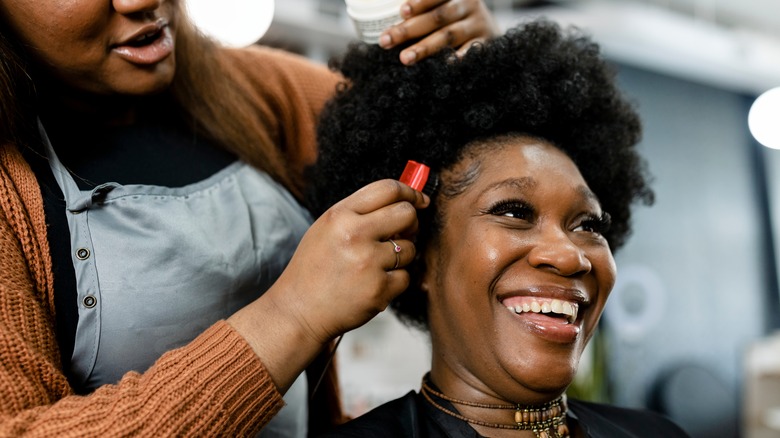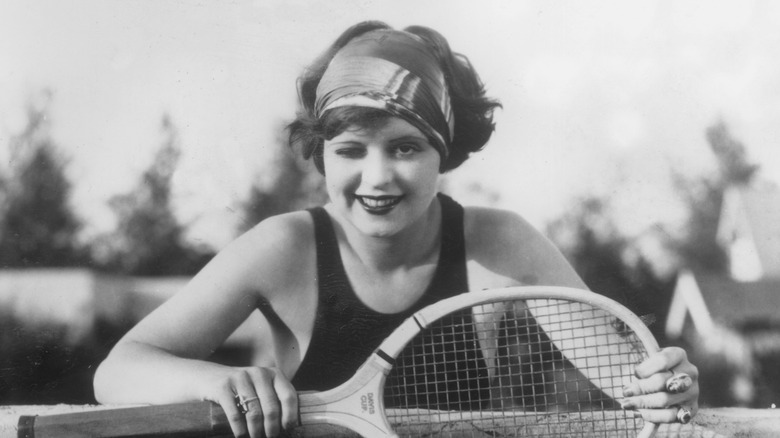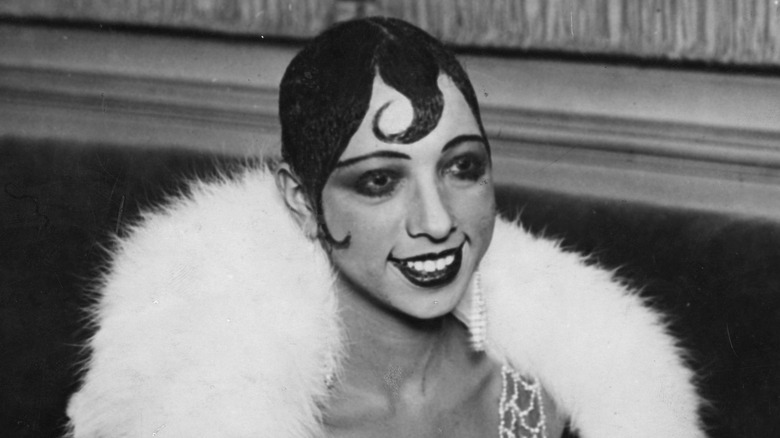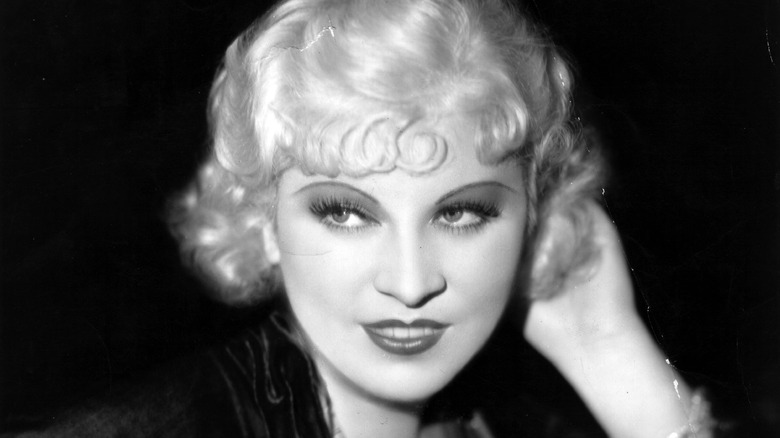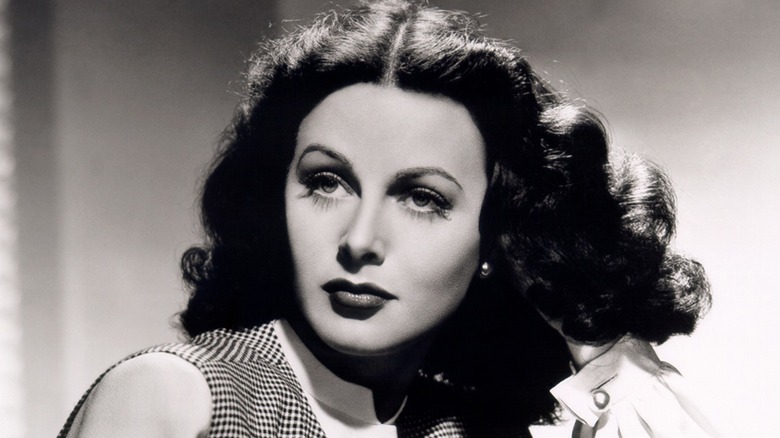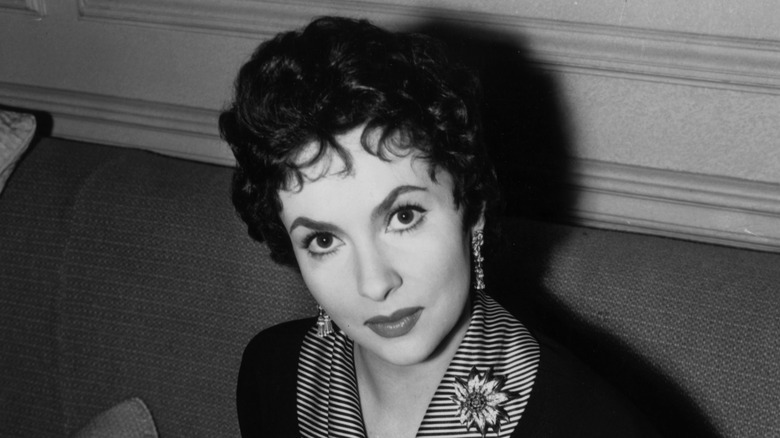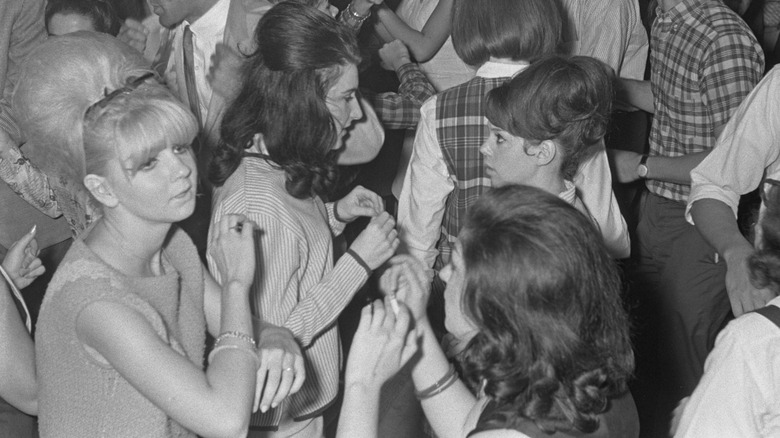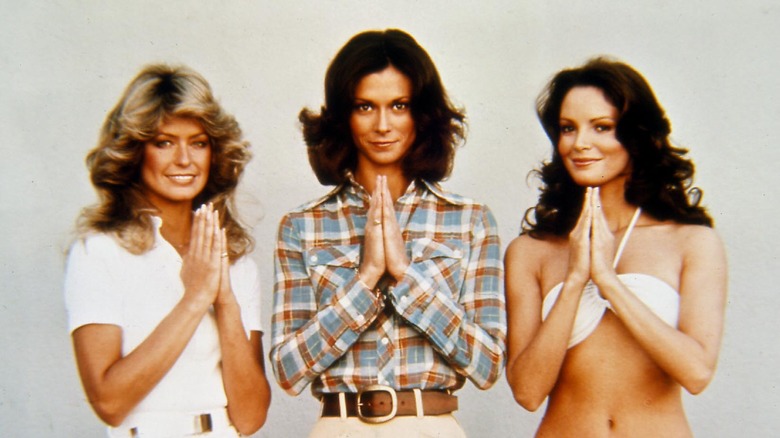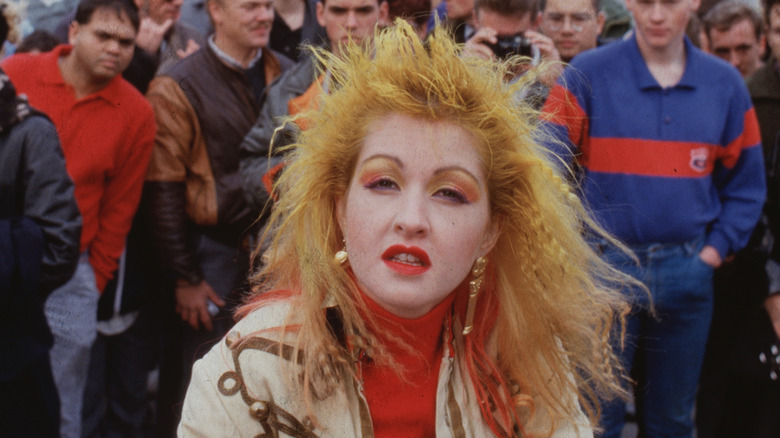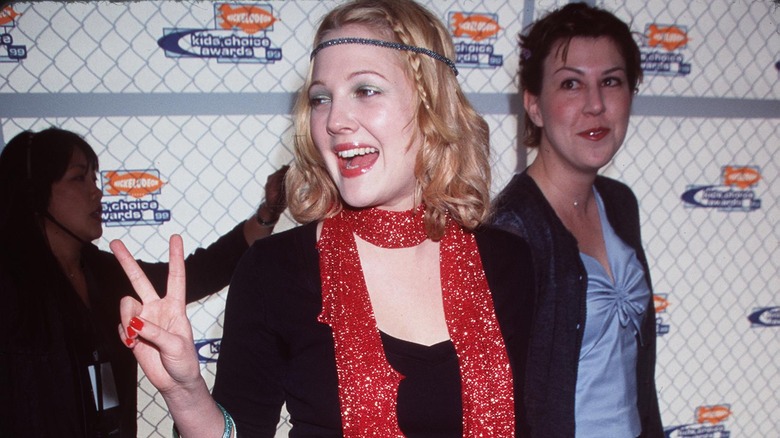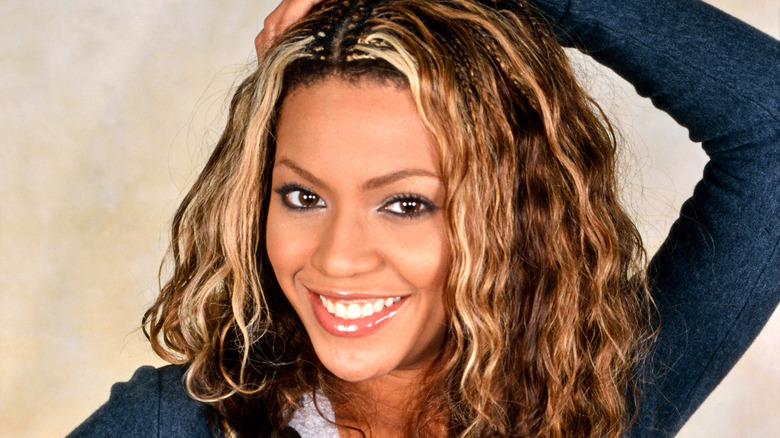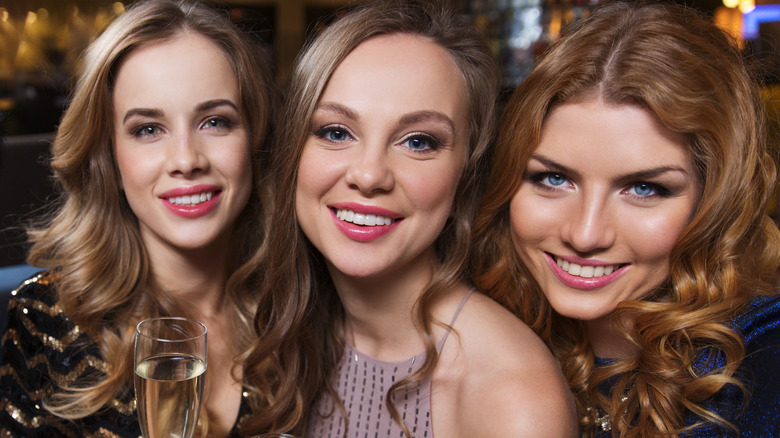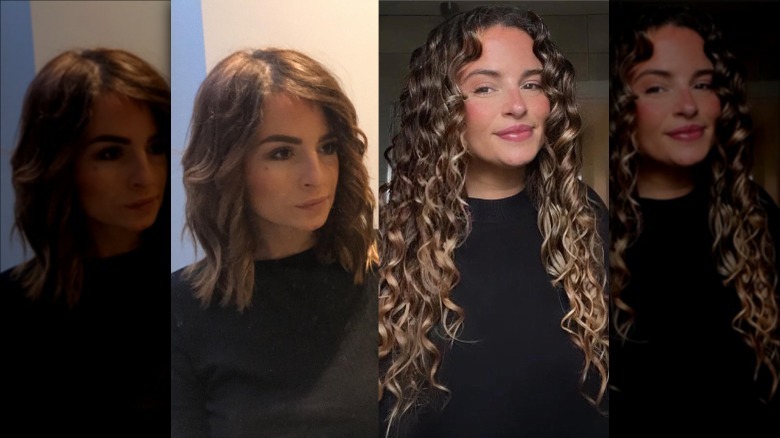100 Years Of Curly Hair
We may receive a commission on purchases made from links.
The way women wear their curls is often a reflection of the influence of their era. This can't be helped. The past 100 years of curly hair — and hair in general — have been all about experimentation. In previous eras, especially in Western countries, women had traditionally worn long hair. Girls wore braids until they became women, then they'd wear their long hair styled in an updo. Very few deviated from this custom until the 1920s when women dared to do the shocking and unthinkable: wear short hair.
Movies and photographs were commonplace by the 1920s, and mass media was more influential than ever. New styles, fads, and trends were able to constantly be introduced to a novelty-loving public just as it is today through social media. Mass media also birthed a celebrity culture and how those figures wear their hair also has a great influence on the public.
Curls have been worn in a myriad of styles: tight and loose, long and short. The way curls are styled is in flux with the movement of time, but beyond aesthetics, there have also been periods where the way a woman wore her curls showed the lifestyle she wanted to live and her hair put her values on display.
1920-1925: Androgyny hits the scene
Long hair has been symbolically linked to femininity across both Eastern and Western cultures. For the women of the '20s, this was a brand of femininity that was being rejected more with each coming year. Women yearned for the independence openly granted to men of all classes. This was a time when women's education was extremely limited, with only 7% of women in the U.S. able to receive bachelor's degrees. The independence of women of all social classes was much more limited than they are today, even for well-educated, wealthy women. Short, boyish hair represented freedom and fun. This was a time when stuffy, traditional values were finally being shaken off and women everywhere were celebrating with their hair. For the "cool kids" of this modern era, short hair was a statement of the dissatisfaction and rejection they had for the old values.
Female entertainers lead the way in introducing and normalizing short hair to women. Popular silent film actresses like Clara Bow and Louise Brooks helped to popularize the bobbed, short look. Brooks wore hers straight, while Bow wore her cropped style curly. These early film starts inspired women all over to chop off their long locks to the dismay and horror of the older generation. In a way, this style was a way for the younger generation of women to give the middle finger to societal norms during a time when their voices were still largely silenced and dismissed.
1926-1930: Getting wavy with finger-waves
Towards the second half of the 1920s, the short bobs cuts of the earlier part of the decade got an upgrade: waves. Specifically, finger waves grew more and more popular, especially as the decade approached the '30s. In 1927, Josephine Baker was photographed in her iconic banana costume sporting, notably, elegant finger waves that framed her face.
Interestingly enough, finger waves were accomplished without any heat tools. To create these waves, women added gel to hair until it was damp, then they used a fine-tooth comb to brush the hair into the shape they wanted. Lastly, they'd clip the desired curls into place and just wait for the hair to set. Heat tools were available at this time with tongs being heated over a gas burner. These heated tongs, however, were unpredictable and potentially dangerous because it was difficult to tell how hot the tongs were heated. With heated tongs being one of the only options to create waves in hair, it's easy to see why many women would want to play it safe and stick to finger waving.
For those who could afford it, new technologies were being developed to create the wavy hair women coveted. Marcel Grateau, known as the creator of the "Marcel Wave", was a French hairdresser who created the first permanent hair-waving equipment and processes throughout the '20s, though access to this technology and these services would not be available to the majority of women until later time periods.
1930-1940: Babydoll chic (aka the Shirley Temple affect)
In contrast to the liberated bobbed curls of the women of the '20s, the short blond curls of the '30s are a disappointing return to the male gaze. During the '30s, child actress, Shirley Temple, became a well-beloved movie star who iconically wore her tight blond ringlet curls cropped. Temple's blond curly hair was very fashionable at the time, being a symbolic representation of youth, innocence, and beauty. Short curls were no longer a symbol of rebellion and independence. They had become depoliticized, normalized, and incorporated into the feminine hair repertoire by the '30s. Hollywood and the entertainment industry had become much more developed by the '30s. Curly hair was embraced by the movie industry and given the Hollywood treatment. Although women still wore their hair short, the popularity of finger waves died down as manicured ringlets became what was seen as most glamorous.
Thanks to the proliferation of "talkies," however, women continued to push the envelope and rebel against the social norms of the day. Mae West wore Temple's bright blond cropped curls, but she was definitely not sugar and spice and everything nice. A forerunner in the platinum blond bombshell archetype, West held herself with bold confidence and was unafraid to be overtly sexual. Hated by the vice squad and beloved by rebels and libertines, West put her sexual liberation on display.
1941-1950: Manicured simplicity and victory rolls
Curly hair was still popular during this era though tight ringlets softened into glamorous waves. A more feminine style grew popular as women began to grow their hair longer than in previous decades. Shoulder-length hair was very popular and the finger wave was back but this time it was looser and brushed out instead of tightly crimped as it was in the '20s. Women like Hedy Lamarr and Katherine Hepburn emerged and set examples as glamorous, confident female intellectuals. In the '40s, both these actresses wore dark shoulder-length curls.
During the 1940s, more women had access to education than in the previous two decades. For instance, 41% of women held a bachelor's degree or a professional certificate during this time and World War 2 had brought women into the workforce. Perhaps the confidence of this age brought about a new type of strong femininity: one that did not feel the need to emulate masculine styles since it was evident that women were capable of serious study and employment. Modern women of this age proved that a woman could become highly educated and be employable and do it all in heels and skirts if she chooses.
Curls were styled into victory rolls, the hairstyle associated with pinup icons like Betty Page. Remember, hair elastics and scrunchies weren't available in the '40s, rolling the hair back was a good way to keep hair away from the face. Women were photographed working on factory production lines with this hairstyle, showing that this hairstyle was as utilitarian as it was glamorous.
1951-1960: The Italian School of Glamour
"Hollywood on the Tiber" refers to the period of the '50s and '60s when Hollywood filmmakers begin making films in Rome, Italy. The name comes from the inspiration that filmmakers took from Rome's stunning, historical architecture, beautiful scenery, and lower production costs. During this time, Americans were also introduced to Italian actresses such as Gina Lollobrigida and Giulietta Masina, who both wore their curls short and brushed out.
This hairstyle was known as the Italian cut, and what made it unique was that it had the ability to look manicured and tousled at the same time. Large curls were cut short, similar to a pixie cut although a bit longer. Then, curls were sculpted in a way to give the appearance of volume with curls arranged to frame the face. Some women preferred to wear this hairstyle with tight and defined large ringlet curls, while other women wore this style with looser waves, giving off a more casual and shaggy vibe.
Blond bombshells had to step aside for a moment as the moment's sex icons so that dark-haired women sporting the Italian cut took their place. Dark-haired women everywhere chopped off their long curls to rock this sexy, powerful look. The Italian cut was associated with sultry voluptuousness as well as passionate and independent personalities. Rosalind Russell wore the Italian cut as she portrayed the hairstyle's archetype in the 1958 film "Auntie Mame." Another example of the bold Italian cut archetype would be Rizzo in "Grease". Although the film was made in 1978, it takes place during the '50s, with the Italian cut making an appearance as a signifier of the decade.
1960-1969: Bold babes of the '60s, bouffant edition
The '60s were a special time in history. The U.S. economy was taking off due to World War II being long over. Vibrant technicolor films and print magazines filled with full-color photographs displayed the newest in clothes and hairstyles. Never before had such a diversity of styles and influences been available to the public. When it comes to the '60s, there just wasn't one way for women to wear their curls. Now there were options and lots of them. This decade saw a shift towards more voluminous and dramatic hairstyles, and curls were often used to achieve the desired effect.
One of the most iconic ways that women wore their curls in the '60s was the bouffant: a high-volume, manicured hairstyle. In French, "bouffant" may be translated to mean "puffy" — the goal of the look. To create the popular bouffant, which was even beloved by Jackie Kennedy, a technique known as backcombing or "teasing" was required. Hair would be teased at the crown of the head to create lots of volume, and then curling irons or rollers would be used to create curls or waves. The curls worn in the bouffant font style were often large and bouncy and this added to its high glamor look. Hairspray became a widely used product during this time period since lots of it was needed to hold elaborate hairstyles.
In the '60s, it was common for women to visit the salon far more frequently than they do today since having one's hair curled, waved, and teased was mandatory to style hair into the beloved bouffant. For those living in London with a budget, Vidal Sassoon encouraged women to visit his salon once a week to have their teased curls lacquered into place.
1965-1969: Bold babes of the 60s, afro edition
While highly processed '60s hairstyles like the bouffant and the beehive were wildly popular with white women, more and more Black women were inspired by the Civil Rights Movement to wear natural hair. For the men and women interested in social justice and civil rights groups, wearing their natural, coiled curls boldly was a point of pride and a display of cultural ownership. For Black men and women, natural hair was a symbol of rejection of the European beauty standards that had dominated American culture at that time.
The afro wasn't just a hairstyle; it was a political statement. It was worn by both men and women at the time. For many, the afro symbolized Black pride and cultural unity. The hairstyle is characterized by high-volume natural curly or coiled hair brushed out by a wide-tooth comb to create fullness. Curls would be lifted and separated at the roots with a comb or a pick and then brushed outwards to create a round shape. Jimi Hendrix, the legendary guitarist and musician, wore his voluminous, curly hair in the afro style, as did political activist Angel Davis.
1970-1979: Flipped out and flowy
The hippie movement of the last '60s was largely over by the mid-'70s as young people preferred to spend their time at the discotheque over political protests in the streets. In the '70s, androgyny was back but this time it shifted towards the feminine: men were wearing their hair long. This was a more open-minded time than the past eras, it was a time when David Bowie, a glam rock musician who openly wore makeup and sported a gender non-conforming attitude, could be mainstream.
Hair was less meticulously manicured than it was in the '60s, and the look was more natural. Two hair styling techniques became de rigor: layering and feathering. Long, layered hair came into vogue with both men and women. For this style, curls were worn big and loose to create volume and then flipped at the ends to frame the face. David Cassidy, a hugely famous teen heartthrob, rocked this look, and so did blond bombshell Farrah Fawcett. Fawcett can be seen wearing her voluminous, loose curls flipped out in her infamous red bathing suit photo, a pop culture symbol of the '70s.
Layered tighter curls brushed away from the face were popular, too, and perms became a popular go-to for this effect. Fawcett's "Charlie's Angels" cast mate Jaclyn Smith frequently wore tighter curls as opposed to Fawcett's looser waves.
1980-1989: Big hair (aka more is more)
The 1980s marked a period of one of the boldest and most non-conforming hair eras. Men and women both experimented with how they wore their hair. Edgy subcultures like the new romantic, goth, and punk movements emerged. Underground music scenes that couldn't be infantilized and commercialized like the hippie movement of the '70s.
Simply having long hair was no longer good enough when it came to making a statement. The '80s were marked as a period where hair got big, literally. The style was even called "big hair" and was used to describe the dramatically voluminous hairstyle. Big hair was worn layered and teased to extremes. This was an individualistic time period, there were many ways to wear big hair. The crimping iron was the hot tool of choice for some, these were used to create an inorganic textured effect on the hair. Perms were also helpful for those who wanted big hair on a more permanent basis. Loud, non-natural hair dyes in shades like blue, green, and purple were also experimented with.
As to be expected from an epoch of extreme hair, styling products, and hair accessories were widely popular during this time. The most iconic accessory was the hair scrunchie: an enlarged hair elastic, covered in fabric. Scrunchies were a way to show off even more flare while being able to hold back your big hair without causing the friction damage of tight elastics — a match made in heaven.
1990-1999: Simplicity becomes stylish
Hairstyles go from being outrageous and maximal in the '80s to simple and natural during the '90s. In previous decades, most of the celebrities that people had turned towards for style inspiration had been actors or musicians; however, the '90s extended that door to fame to another type of entertainer: the supermodel.
With supermodels came the "model-off-duty" style, inspired by the casual looks that models would rock for their casting calls. Simple clothes like tank tops or white t-shirts paired with jeans and boots or sneakers. Never in history was a style more minimal. During the "golden age of the supermodel," curls were blown out large and loose with the help of barrel brushes. Cindy Crawford was often photographed in an easy-breezy, model-off-duty style. It's not just loose curls that are seen on '90s tastemakers, tighter curls made a comeback too. Grunge-era Gen X darlings Courtney Love and Drew Barrymore both sported bright platinum blond ringlets à la Shirley Temple.
2000-2009: The age of the artificial natural
The early 2000s moved away from the natural looks of the '90s as heat tools like curling irons and hair straighteners became everyday hair styling instruments. Although the popular look of the decade was far more natural than it was during the '80s, it became normal for hair to undergo harsh chemical processes like bleaching, coloring, and straightening. Extensions also became popular during this period to add length to hair.
Pop stars and groups such as Britney Spears and Destiny's Child influenced the styles of this era. Tabloids reporting on salacious celebrity gossip were extremely popular during this time, and it was the heyday of exploitative reality TV. Natural corkscrew curls and tight ringlet curls were no longer in style if worn naturally, although it was trendy for women to use curling irons to create tight ringlets to add decorative elements to their updos. Hair mouse was heavily applied to wavy hair when it was damp, producing crunchy, textured hair as it dried with a wet look. The look during this era was hyper-processed, although it was meant to mimic a natural look.
2010-2019: Beach waves and blow-outs
The look of the 2010s was less artificial than during the prior decade. This was the age of the Millennial: the first generation to grow up using the internet and social media. Blowouts became normalized as dry services salons like Drybar start to crop up in urban areas. Bouncy, healthy, and sleek hair with large loose curls at the ends of hair was the blown-out look that women wanted. Hair was almost exclusively parted on the side by millennial women with the option of side bangs to sweep across the face. During the 2010s, long loose beach waves were popular although natural tight spiral curls were still not embraced.
Japanese and Korean hair salons in cities like Los Angeles, New York City, and San Francisco introduced a new method of creating permanent waves called "digital perms" to a Western audience. Digital perms involve processing the hair with chemicals and then set using rods that are heated and connected to a machine that controls the temperature of the individual rods. Unlike traditional perms, which are often very tight, digital perms create very natural, loose waves. Digital perms are also less damaging to hair because different chemicals are used to treat hair. It's easy to see why digital perms are popular: You get the look of a perfect blow-out day after day without having to do anything!
2020-Present: Notes from the curly girl underground
Published in 2010, Lorraine Massey's book "Curly Girl: The Handbook" was a revolutionary text on how to care for curly hair. This book embraced the idea of wearing natural curls and how to restore dry or damaged hair so that your natural curl pattern is enhanced. Although this book was written over 10 years ago, it's important because it sparked an underground movement known as the Curly Girl Method. Women from all over the internet communicate with one another through social media and message board sites in order to trade information and share experiences with the Curly Girl Method. Although this movement has gained a huge amount of attention over the last several years, there is still a very "underground" feel to the scene.
One of the things that make the Curly Girl Method unique is that it doesn't involve buying new products or hair treatments, it focuses more on eliminating harmful styling products (including shampoo) and all forms of heat styling from your hair care routine. The idea is that once your hair is healthy again, natural curls will shine. The Curly Girl Method is inspiring women who once thought curls were "unprofessional" or "messy" to start wearing their natural curls with pride.
